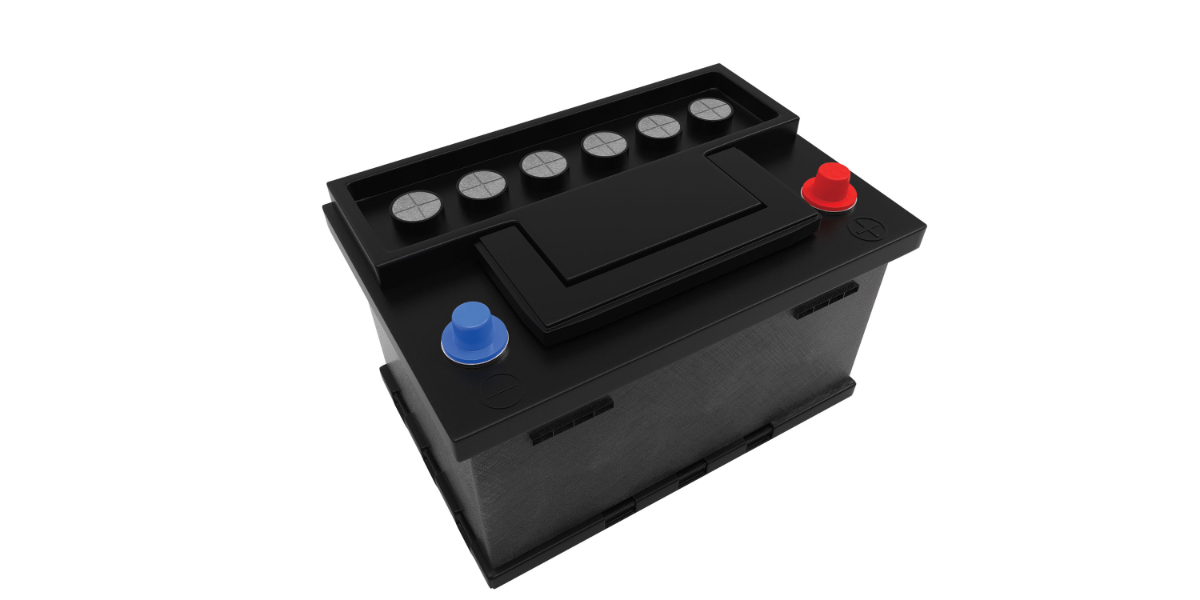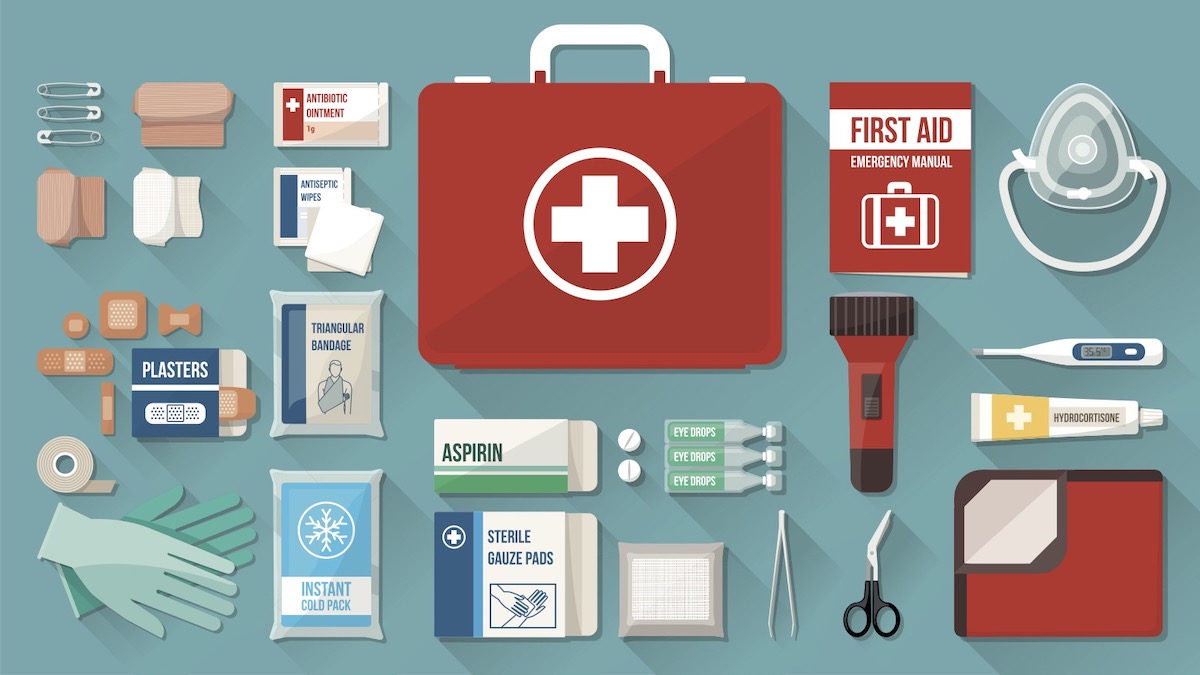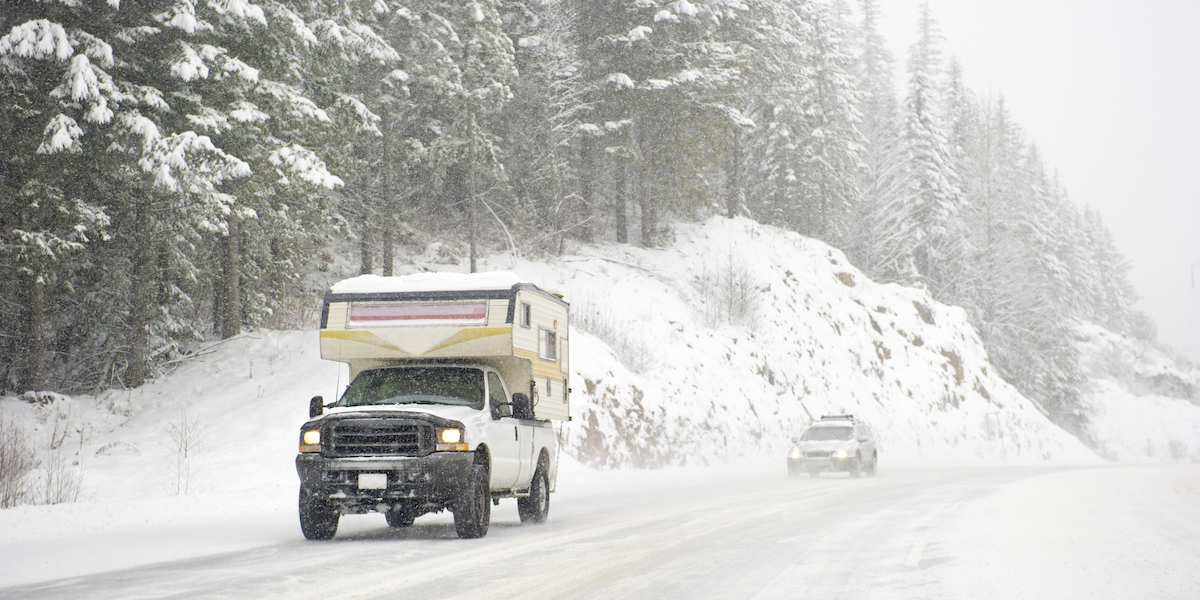How to Make Your RV’s Refrigerator More Efficient
An efficient refrigerator is important out on the road!
Image Caption:
Have you noticed that your refrigerator constantly has a solid block of ice built up at the back lately? This is a telltale sign that your fridge isn’t running efficiently and it should be motivation for you to learn how to make your RV’s refrigerator more efficient.
There are other signs that your fridge may not be working as efficiently as it should. But why should you care?
Why Your Refrigerator’s Efficiency IS Important
There are many ways in which an inefficient refrigerator could be negatively impacting your RV life. Here are some of the common problems that can result from a fridge that isn’t functioning properly:
- Your food spoils more quickly because it isn’t being kept at an optimal temperature
- Your fridge is consuming more propane than normal (which you have to pay to refill)
- Your fridge is using more electricity than normal (which can drain your battery)
- Your favorite drinks aren’t cold after a long day in the sun
In short, an inefficient RV refrigerator is costing you money and making your RV life less enjoyable!
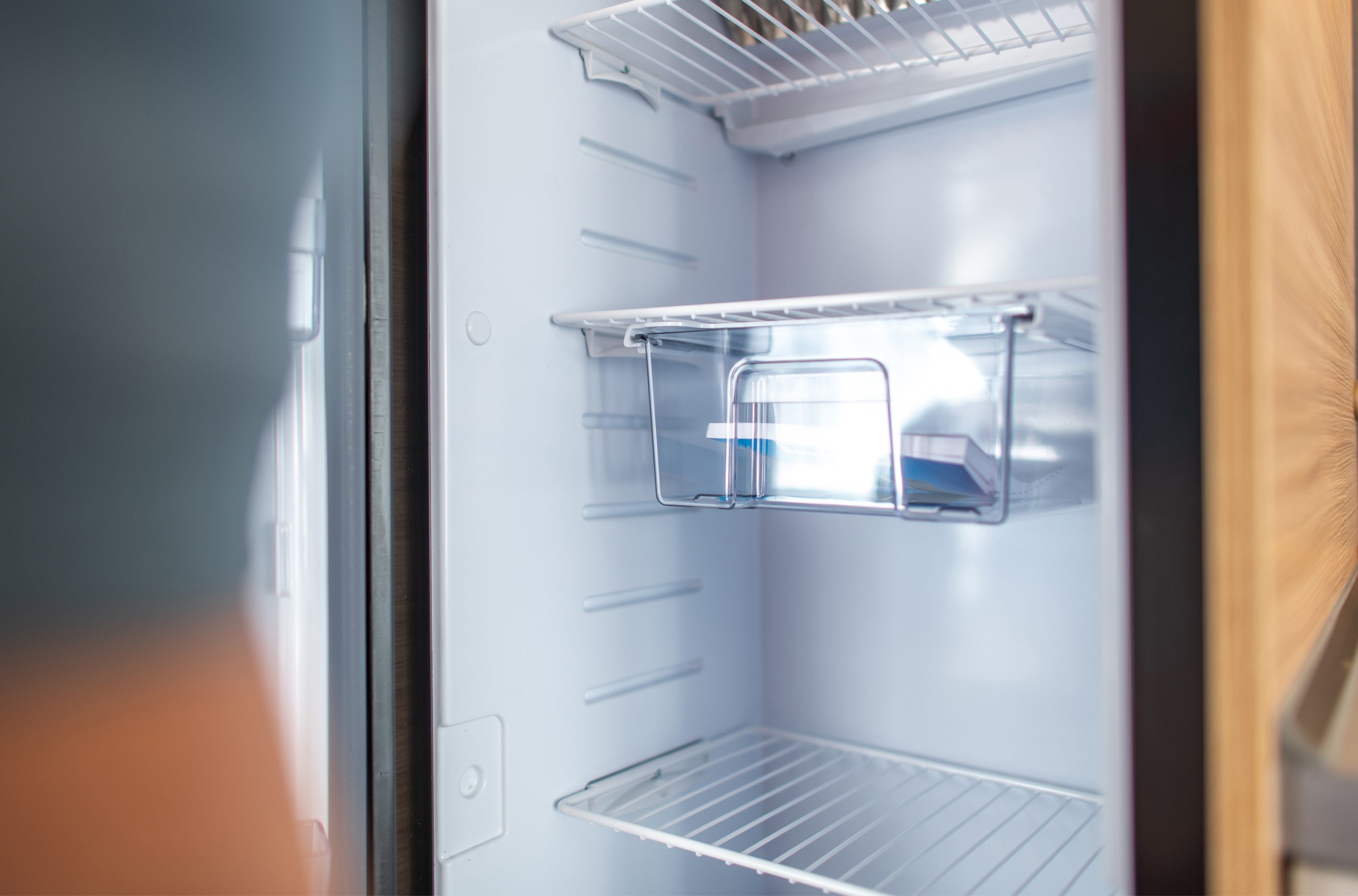
Image from Shutterstock
Signs That Your Fridge Is Inefficient
The idea that a buildup of ice in the back of your fridge is a sign that it is inefficient might be a bit counterintuitive. But your refrigerator should be maintaining a consistent temperature that is somewhere between 32 and 42 degrees Fahrenheit. That is above freezing folks!
So there is really no reason why you should have ice building up in your fridge at all. Your freezer, on the other hand, should maintain a consistent temperature between 0 and 18 degrees Fahrenheit, depending on the setting you choose.
Still, your freezer should have excess ice built up inside either because that eats your total storage space for frozen goods. In addition to an excess ice buildup, here are some other signs that your fridge may be running inefficiently:
- It only works on one type of power (i.e. only AC, DC, or propane)
- There is always condensation on food storage containers when you take them out
- It is leaking water
- The mountains aren’t blue on your favorite beverage
Some of these are signs of larger problems, but most can be fixed with a few simple refrigerator efficiency tips.
How To Make Your RV’s Refrigerator More Efficient
Even if you don’t notice any of these signs, there may be some things you can do in your everyday RV routine to make your refrigerator more efficient. How many of these tips do you already employ on your RV travels?
Find Shady Campsites
The goal here is to keep the wall of your RV that the refrigerator is on out of direct sunlight for as much of the day as possible. Depending on the design of your RV, you may have to get creative when it comes to pulling into certain campgrounds.
Of course, not all campgrounds will remain shady throughout the entire day. To make your RV more efficient, however, consider the path that the sun will take through the sky before you decide how to orient your RV in your campsite.
Sometimes, this may require pulling in head first instead of backing in. And that can mean your electrical, water, and sewer connections might be a little further away. If you pick up an electrical extension cord, extended water hose, and 20-foot sewer hose, you will have more freedom when it comes to how you park your RV.
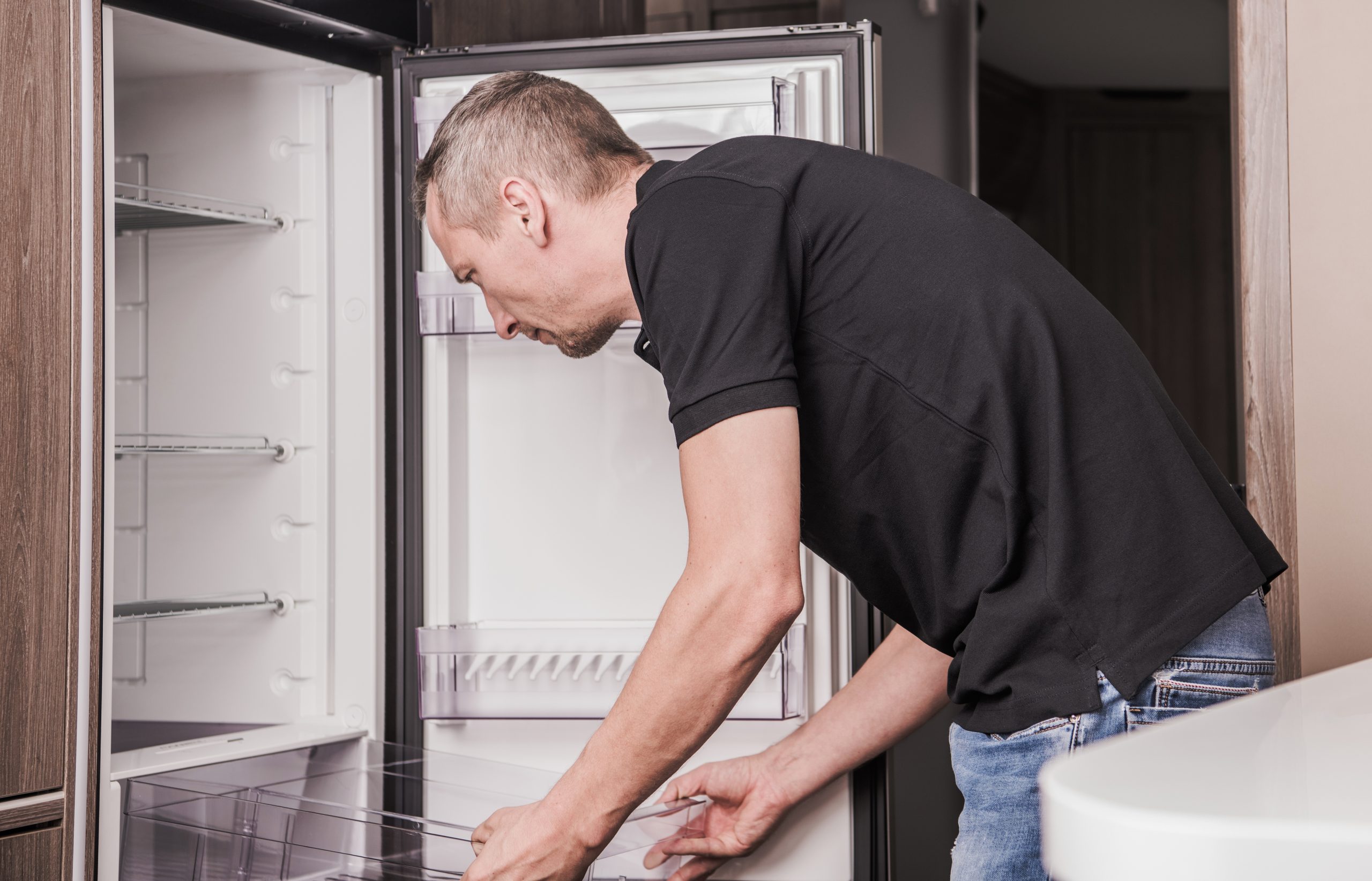
Image from Shutterstock
Level Your RV When Parked
You should also take the extra time to level your RV once you pull into your campsite. If your RV is equipped with hydraulic leveling jacks, you can quickly do this before you even get out. If not, you will have to set your leveling blocks in place and then have someone guide you up onto them.
Some RV refrigerators are so sensitive that they will not switch over to electric power if your rig isn’t perfectly level when you are plugged into shore power. This will cause it to burn valuable propane instead of the electricity that you are paying for from the campground.
Most RVs have a small bubble level somewhere near the captain’s chair to help you tell if your rig is level. If you don’t have one of these, you can install one of your own there or in your refrigerator. Also, you will know your rig isn’t level if the liquids inside the jars in your fridge are clearly tilted in one direction.
Check The Door Seals
Door seals are one refrigerator component that will wear out and need to be replaced before many others. It can be hard to tell if a seal is compromised by just looking at it, so you will need to employ the ‘dollar bill test’.
Start at one of the top corners of your refrigerator door and place a dollar bill between the door and the seal. Then close the door and try to pull the dollar bill out. It should not be easy to do. If it is, your door seal is compromised. To complete this test, you will need to work the dollar bill all the way around the edges of the door to test the entire seal.
Keep Space Between Items
When your refrigerator is jam-packed, air won’t be able to pass between your foodstuffs. An efficient refrigerator relies on constant airflow and circulation of cold air from top to bottom and back to front.
When air is not able to circulate adequately, your fridge will start working overtime to try to keep up. This can lead to condensation, ice buildups, and your food spoiling prematurely. Some people even place a small, battery-powered fridge fan inside their fridge to promote additional air circulation.
This is an especially difficult one because most of us want to stock up before RV trips so we don’t have to stop multiple times. Stopping for groceries more frequently will, however, make your fridge more efficient and can also allow you to support more local co-ops and farmer’s markets.

Image from Shutterstock
Have a Plan When You Open The Door
My Dad used to hound us about this one all the time. “Were you born in a barn?” Well, of course not. But his point was that we should know what we want before we open the door in order to reduce the amount of time that cold air has to escape.
Every time the temperature rises inside your fridge, it senses it and begins to work harder to cool that temperature back down. So your fridge will be able to run more efficiently when the door is only opened for short periods of time.
Monitor The Interior Temperature
You can also place a small thermometer inside your fridge in order to regularly monitor its temperature. It should remain in that 32 to 42-degree range and should not experience wild fluctuations. If it does, it may be a sign of a larger issue.
Regularly Inspect The Exterior Access Compartment
The access compartment to the back of your fridge from the exterior of your RV can sometimes become a home for insects and small animals to build a temporary home. When there is a bunch of dirt and nest materials inside there, it can cause damage to your fridge’s electrical components.
So you should add a quick inspection and cleaning of your refrigerator’s exterior access compartment to your spring-cleaning checklist. Just be careful not to ever blast water directly into this compartment, as it can also cause electrical damage if you are not careful.
Clean It Frequently
This is another item to add to your RV’s regular cleaning routine. Take everything out and give it a thorough deep cleaning at least twice a year. Use a damp cloth, water, and a mild detergent to remove any sticky residue.
If your RV has a residential refrigerator with a water filtration system, this is a good time to replace the filter element and clean out the waterline. If it has been a while since you cleaned the waterline, you may even consider replacing it completely. You can also sync this up with the next step to make things even more efficient.
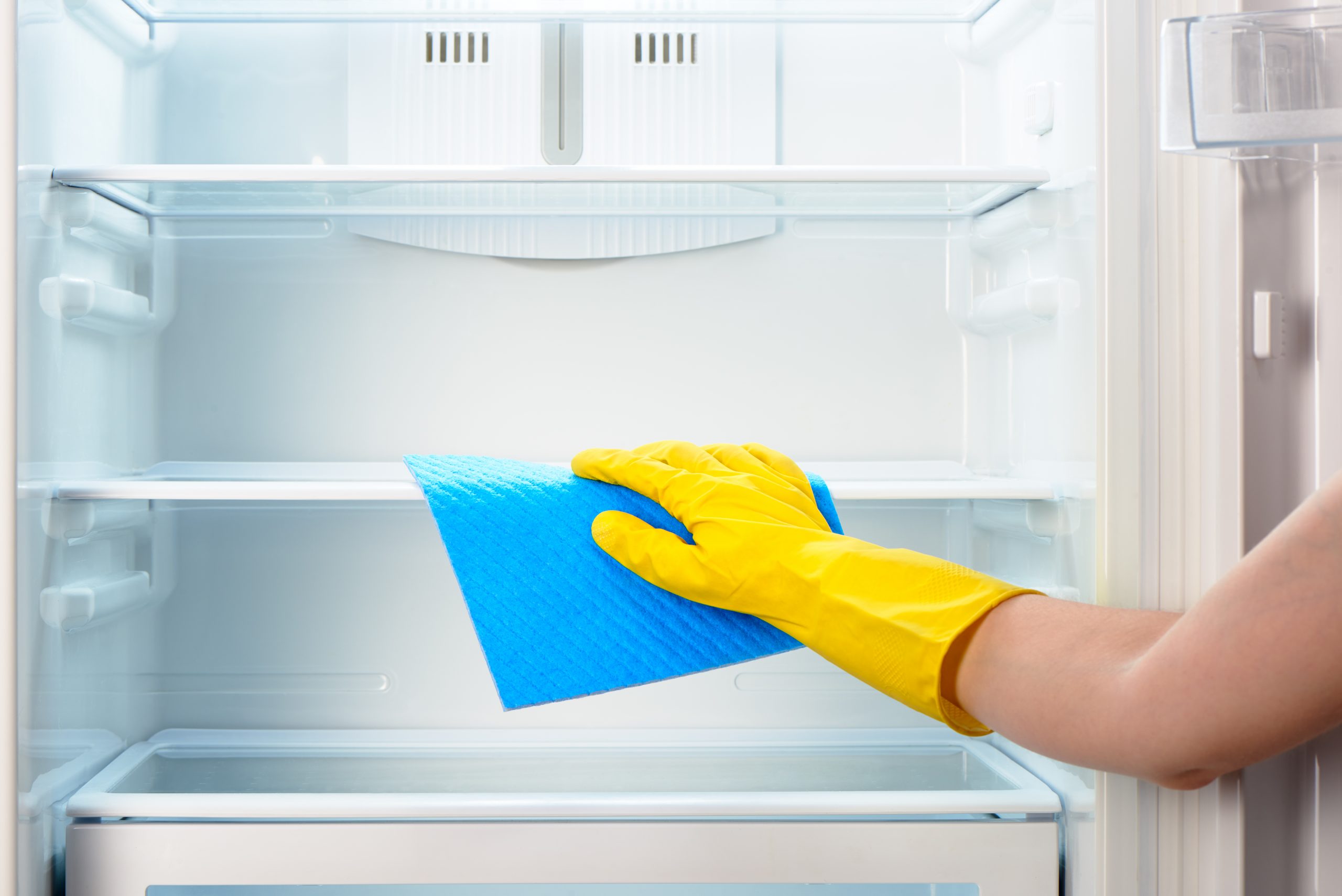
Image from Shutterstock
Defrost The Freezer On A Regular Basis
Before you start cleaning your RV, you can start the freezer defrosting process. It is good to regularly defrost your freezer because ice build-ups will definitely make your refrigerator run less efficiently.
To do this, make sure the fridge is turned off and disconnected from the power outlet. Remove everything and lay out several thick towels inside and below the freezer to soak up the water at the ice melts. From here, you can simply leave the freezer door open and allow the process to happen naturally.
If you want to speed things up, you can very carefully utilize a heat gun on its lowest setting. If you take this route, you will need to remain present and move the heat gun constantly. Leaving it in one place for too long can cause the plastic inside your freezer to melt. Either way, stick around and monitor the situation to make sure the melting ice doesn’t cause water damage in other areas of your RV.
Conclusion
The good news about most of these tips is that you can pretty easily build them into your regular RV setup and maintenance routines. Not all of them have to be done every time, but sticking to a regular schedule will help to maximize the efficiency and lifespan of your RV refrigerator.
At the end of the day, you deserve to have your perishables stay fresh and your favorite drinks stay cold. With these RV refrigerator efficiency tips, you can worry less about what’s inside your RV and spend more time enjoying the scenery outside!

